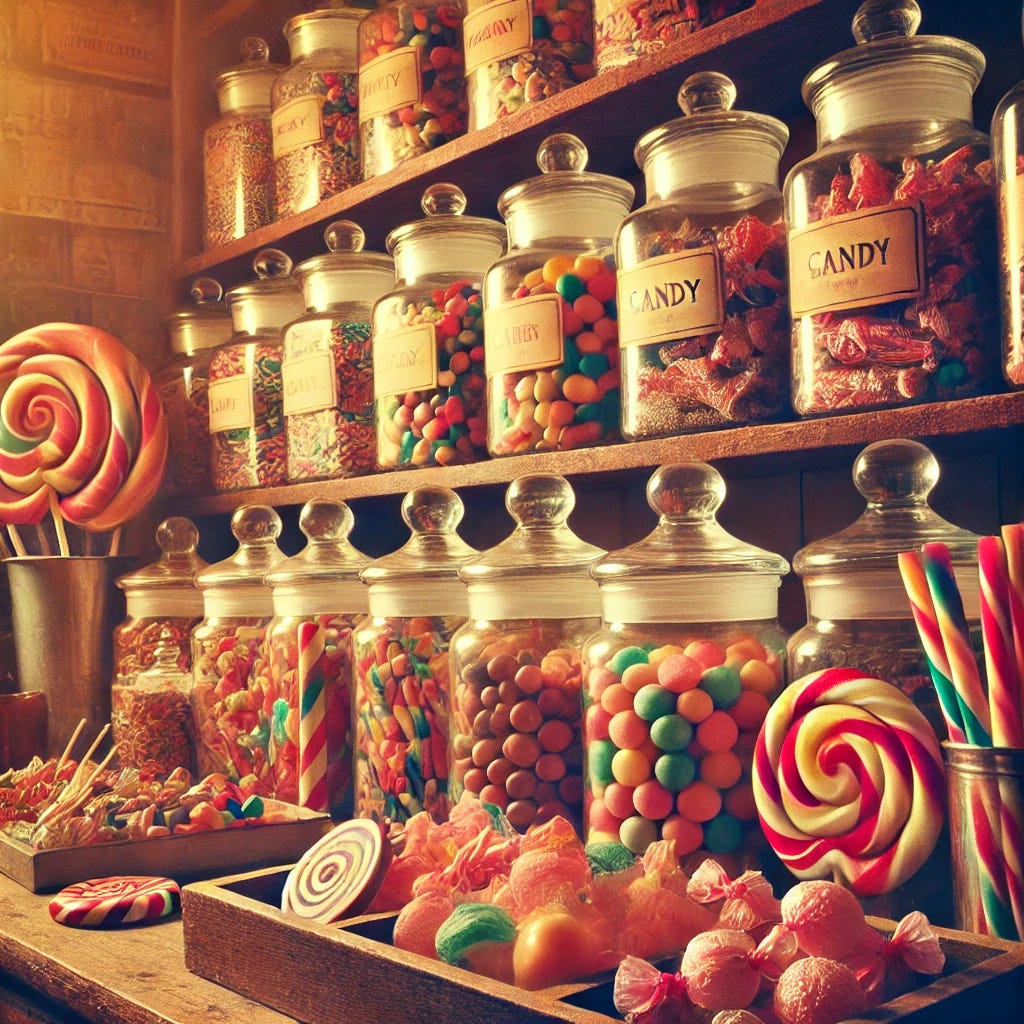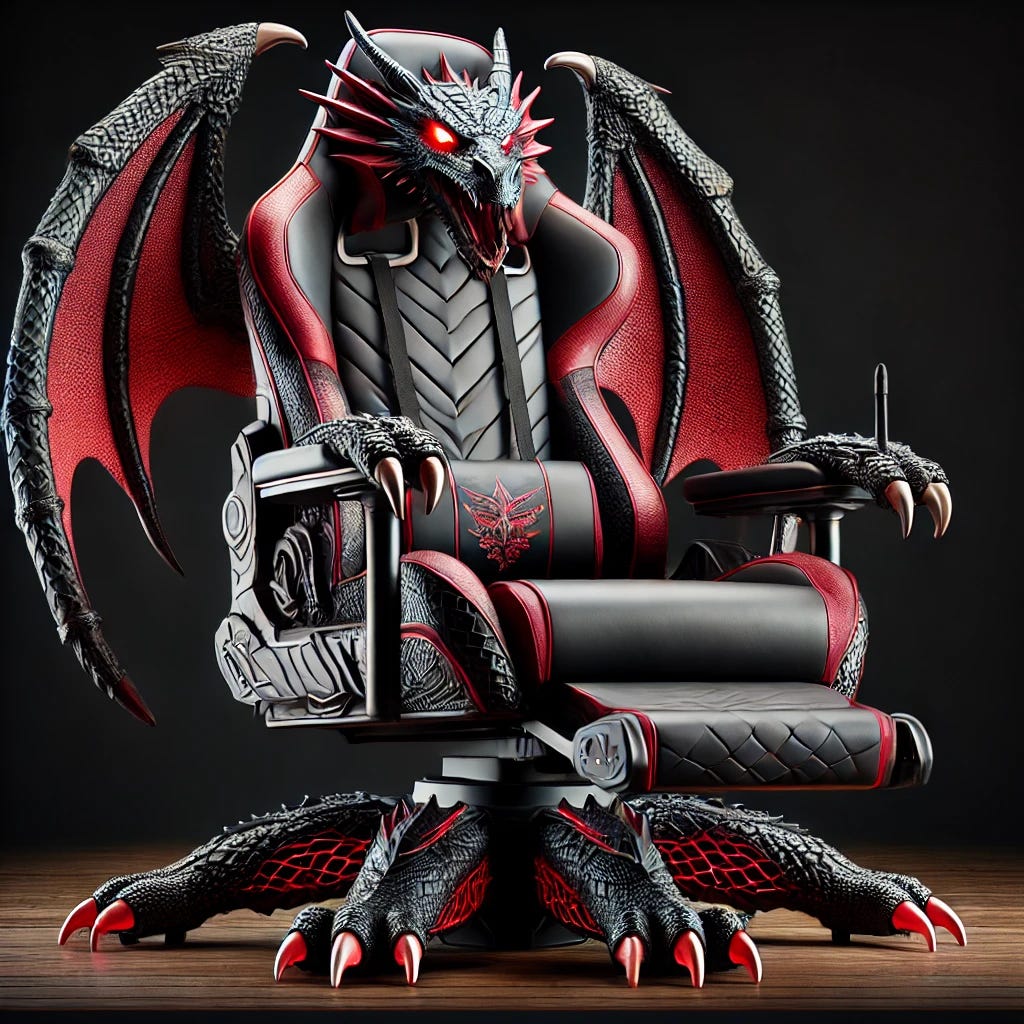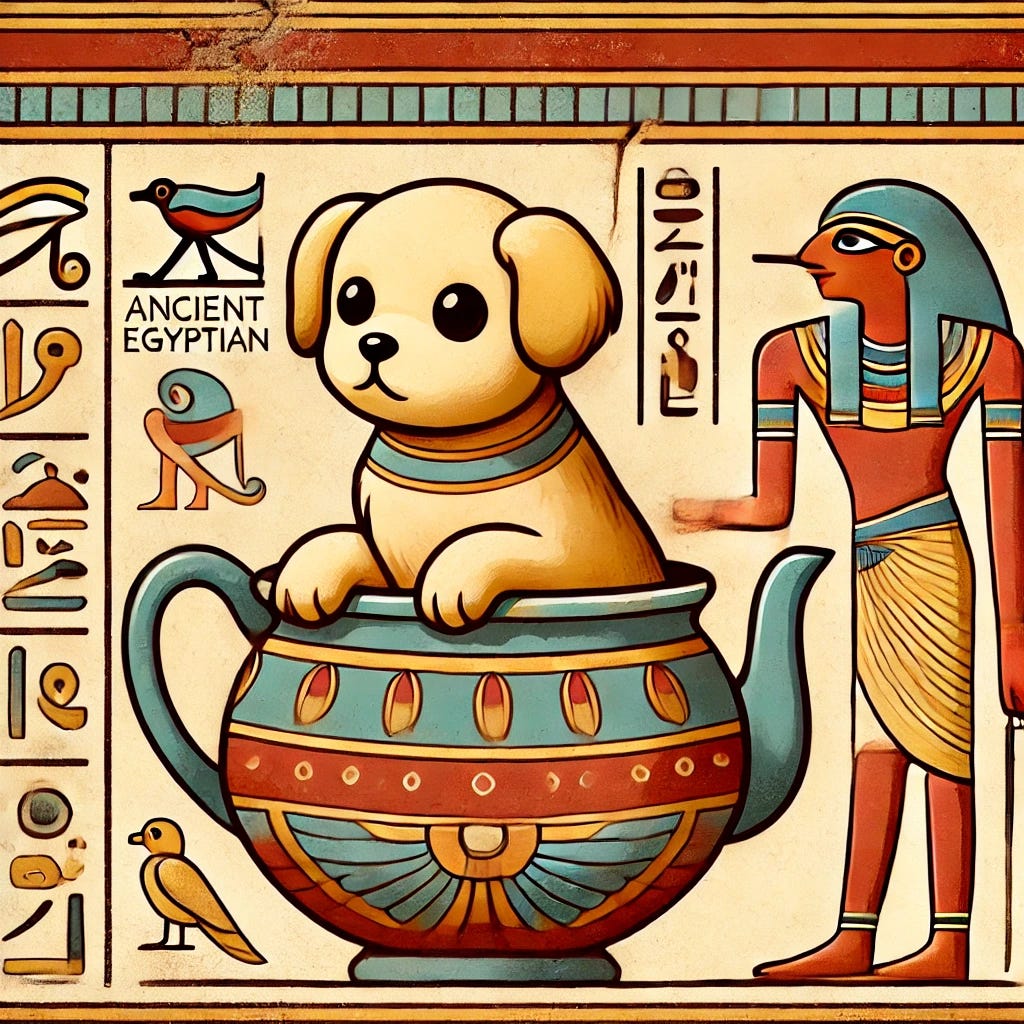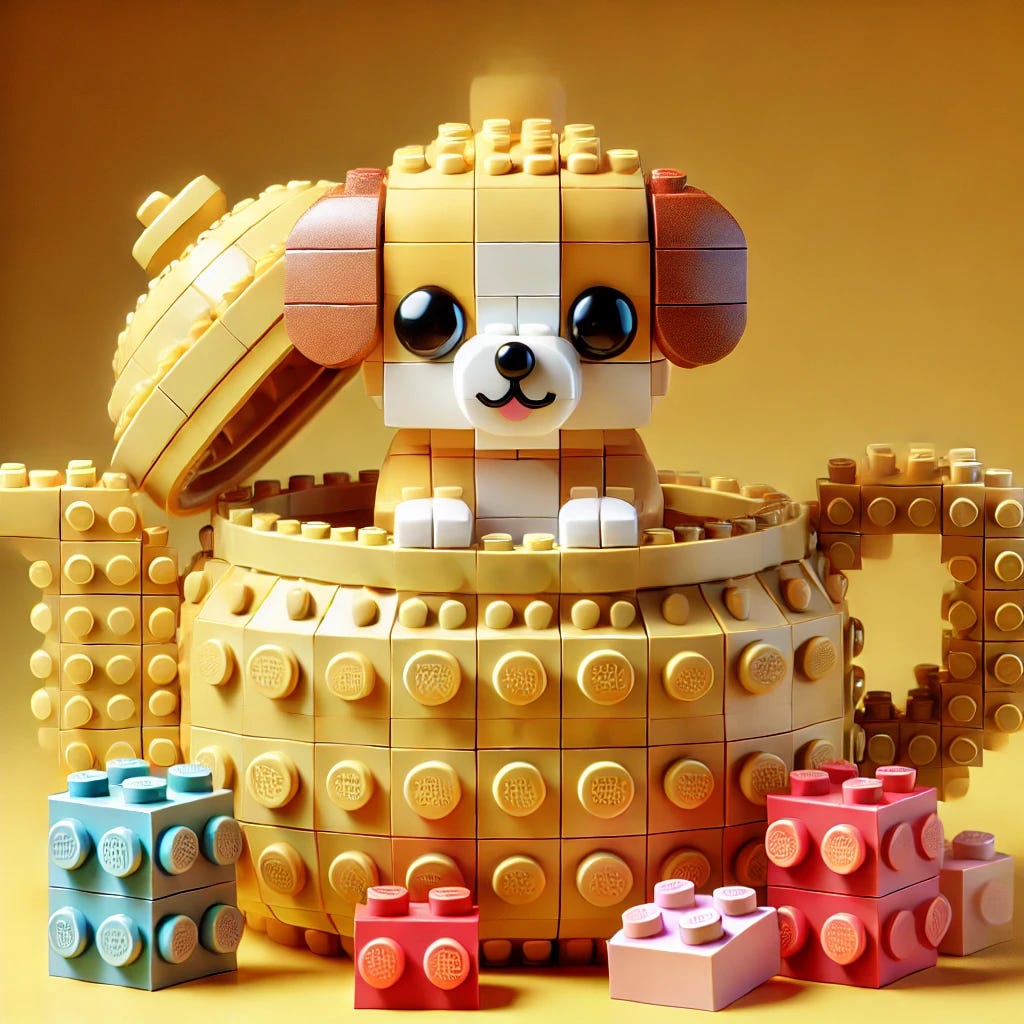Possibly one of the most fun and interesting uses of AI is to generate images. There are many different AI platforms out there that do this, but let’s explore the system that is baked right into ChatGPT.
ChatGPT uses another technology called DALL-E for generating images, but that’s not something you’d notice since you can simply chat with ChatGPT and ask it to create an image of your choice. However, I’m going to keep referring to this technology as DALL-E for the rest of this post.
Let’s jump right in!
When you first start playing with DALL-E, it’s hard not to get addicted to creating fun, random, and whimsical images. For example, I can enter the following chat prompt into ChatGPT:
"Create an image of a steampunk kitten riding a unicycle through the sky”
After waiting for a few seconds, here’s the image that I got:
That’s so fun! Sure, it’s not perfect. Firstly, it’s not actually a unicycle, since there’s a small, second wheel. Also, I’m not quite sure why the kitten has two pairs of goggles. In a future post, I’ll talk more about the hitches and glitches that can occur when using DALL-E, but in this post, I’ll focus on some of the good parts.
Now, the way DALL-E works is similar to how ChatGPT works in the fact that DALL-E has been trained on thousands - no, millions - of images. That is, DALL-E has seen countless images of kittens - and has been told that these are all kittens. Also, DALL-E has seen countless images of unicycles. And DALL-E has also seen countless images of a steampunk aesthetic. So, when we ask DALL-E to create a steampunk kitten on a unicycle, it creates kind of an average of all the images it’s seen and mashes it all together.
This explanation is simplified a bit, of course, but that’s the gist of it.
Let’s try out some more fun images. Here’s another prompt:
“Create an image of a chess rook and chess bishop enjoying tea together.”
Love it! Next up:
“Create an image of an avocado-unicorn hybrid with iridescent wings.”
If you put weird in, you get weird out. But, honestly, this is amazing.
Now, besides being fun, image generation has many practical uses. For example, I use image generation to incorporate images into my post videos to make them more engaging. Before AI, since I didn’t want to hire an illustrator, I would have to comb the web for free images. This was super tedious and time-consuming. Now, I can get DALL-E to create beautiful and fascinating images of exactly what I ask for.
Similarly, I use DALL-E to create images for my blog posts. Very often, a blog post has a big banner image up on top. For this very post, I asked DALL-E to create an image for me. Here was my prompt:
“Create an image of AI drawing a painting.”
And I got the perfect image, which I indeed will use for this post. These types of images are also perfect for social media!
Along the same lines, if you have a website or the like and need a stock photo, instead of buying the license for one, you can create your very own custom stock photo in seconds. Here was my stock photo prompt:
“Create an image of two business people shaking hands.”
This one is interesting, as the person on the left is strangely blended into some cityscape. If, say, I wanted a different image, I could simply add the prompt:
“Try another one.”
DALL-E uses elements of randomization in its image creation, so you’ll never get the same image twice, even with the same prompt. And so, this time I got another image - this time, a more realistic one.
Note that I could have also explicitly prompted DALL-E to create for me “a more realistic image.”
DALL-E can also be used to create images for flyers or print advertisements. Let’s say my son was making a lemonade stand. We can ask DALL-E to help create a fun image to include in the ad.
This works great, obviously, for online ads too. Say I wanted to create an ad for a plumbing business:
“Create an image of a friendly plumber fixing a sink.”
Image generation is also great to include in presentations, such as PowerPoint or the like. Whatever topic you’re presenting on, there are plenty of images that can help emphasize your point. I made a meta image of this with the following prompt:
“Create an image of someone making a powerpoint presentation with the slide showing dollar bills and graphs.”
If you own a store or a restaurant and you want to add some decor such as murals or paintings on the wall, you can have DALL-E create those as well! If I owned a candy store, I might ask DALL-E something like this:
“Create a retro image of candies.”
You know all those websites and social media apps that ask you to create or upload an avatar? Well, you can have DALL-E try to create the perfect one for you. For example:
“Create an avatar of a slightly balding man with glasses using a laptop.”
If that was my level of baldness, I’d be quite happy. I could add more detail to try to make it look more like me. Or, one could make it look like whatever public face they’d like to put on.
I can also use DALL-E to help me craft a company logo. Going back to the plumber example, I might come up with this prompt:
“Create a logo for a plumbing company that emphasizes friendliness, expertise, and timeliness.”
Now, this image is certainly not perfect. Firstly, it decided to give my company a name: “FRMANY” - wat? Also, DALL-E has some issues forming letters. You can see that word “expertise” is kind of messed up. And lastly, what’s up with the plumber’s hand? He’s sticking his hand into his pocket and somehow it comes out somewhere else.
So when it comes to creating a logo, DALL-E is unlikely to produce a ready-to-use image, but it can go a long way to help brainstorm ideas. From there, you can ask a designer to perfect the image.
DALL-E is also a viable tool for brainstorming physical products. If I produced furniture and wanted to introduce a new line of gaming chairs (those are sleek like chairs preferred by video gamers), I can create a prompt like this:
“Create a realistic gaming chair that looks like a dragon.”
Wow. That’s awesome. It’s not 100% practical, since it’ll be uncomfortable to rest my head on the dragon’s head. But here too, DALL-E is good for the brainstorming phase, but not the ready-to-use product blueprint.
Have you ever wanted to create your own children’s book, but never did it simply because you couldn’t draw the illustrations? Well, DALL-E might help you bring that book to the finish line. I can write a prompt such as:
“Create an illustration for a children's book in which two squirrels are playing soccer.”
If you’re reading or writing fiction and want to better visualize something from the book more clearly, DALL-E can help for that too. Here’s an example prompt:
“Create a futuristic landscape featuring houses of a cute alien race.”
Something that’s good to know regarding DALL-E is that although images will be square by default, you can also explicitly request tall or wide images.
“Make it a tall image”
“Make it a wide image”
One of the really cool things about DALL-E is that you can request so many different sorts of art styles.
Let’s say we want an image of a puppy in a teapot. We can explicitly ask for it as a realistic photo:
“Create an image of a puppy inside a teapot - as a realistic photo.”
From here on in, I don’t even need to create the whole prompt again; I can just specify the style in my next prompt like this:
“as a Van Gogh painting”
“as a felt design”
“as a design on a knitted blanket”
“As superhero comic book style”
“As a coloring book”
(This can be really fun for the kids! You can make them a coloring sheet for anything they can dream up.)
“As low-poly 3d”
"As hi-poly 3d”
“As an Egyptian mural”
“as lego”
It’s so cool!
“As 3d claymation”
“As a 19th-century photo”
“As glass mosaic”
“As Origami”
“As Dungeons and Dragons”
“As film noir”
“As Disney style animation”
“As pixel art”
There are undoubtedly so many other styles and use cases that you might think of that I’ve overlooked. Go ahead and play with DALL-E and behold the amazing creations it comes up with! In future posts, I’ll dive further into specific use cases, but this should give you a nice overview of what DALL-E is capable of.















































Share this post